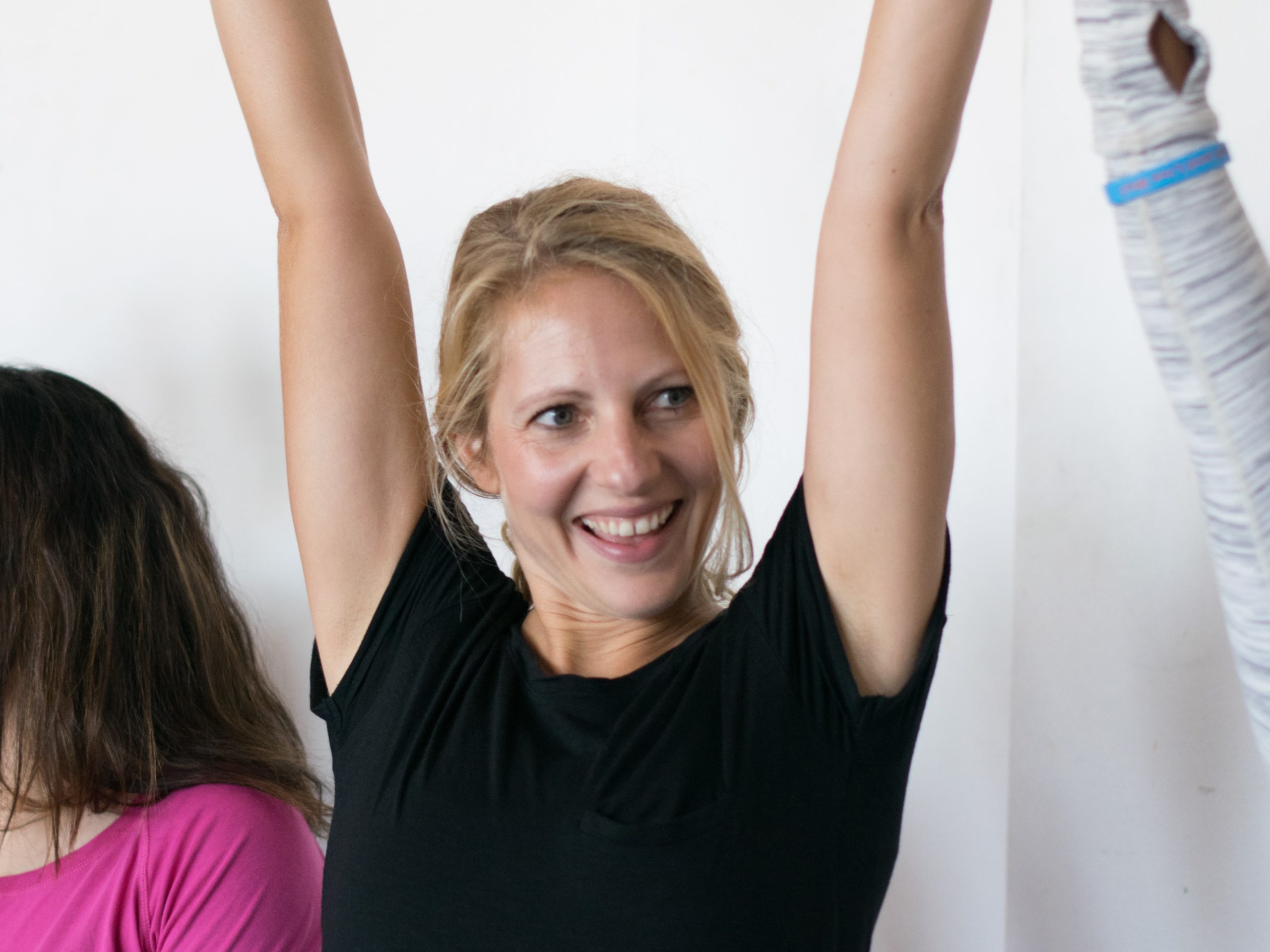
08 Sep 10 Differences Between Laughter Yoga and Laughter Wellness
As a Laughter Yoga and Laughter Wellness Facilitator, certified to train others in both modalities, a question that regularly comes up is ‘‘What is the difference between Laughter Yoga and Laughter Wellness?’’
A little bit of history, to provide context:
Laughter Yoga was created in India in 1995, by Dr Madan Kataria, a medical doctor, who was exploring the benefits of laughter, with his wife Madhuri Kataria, a yoga teacher, who incorporated yogic breathing into the method.
Laughter Wellness was created by Sebastian Gendry, from the USA, who travelled to India and trained in Laughter Yoga in 2004. As a Laughter Yoga Master Trainer, fluent in English, French and Spanish, he played a major role in introducing Laughter Yoga to Northern America and many other parts of the world. He created the first Laughter Yoga Training Manual. Over time, Sebastian’s style evolved and Laughter Wellness was born.
Laughter Wellness is based on Laughter Yoga. It incorporates all aspects of Laughter Yoga, within a wider framework.
Similarities
Both Laughter Yoga and Laughter Wellness:
– are simulated laughter practices, that allow people to laugh, without jokes, comedy or humour. Participants are invited to choose to laugh, because they can. Through simulated laughter, we are able to achieve benefits of laughter, including reduced stress, enhanced mood and feelings of connection.
– start with an introduction about the benefits of laughter, to provide context. They both involve a laughter workout, a laughter meditation and a grounding exercise to ground the energy of laughter and restore a sense of balance.
– include the famous ho ho ha ha ha clap and chant. These sounds come from the diaphragm, a key muscle involved in laughing and breathing.
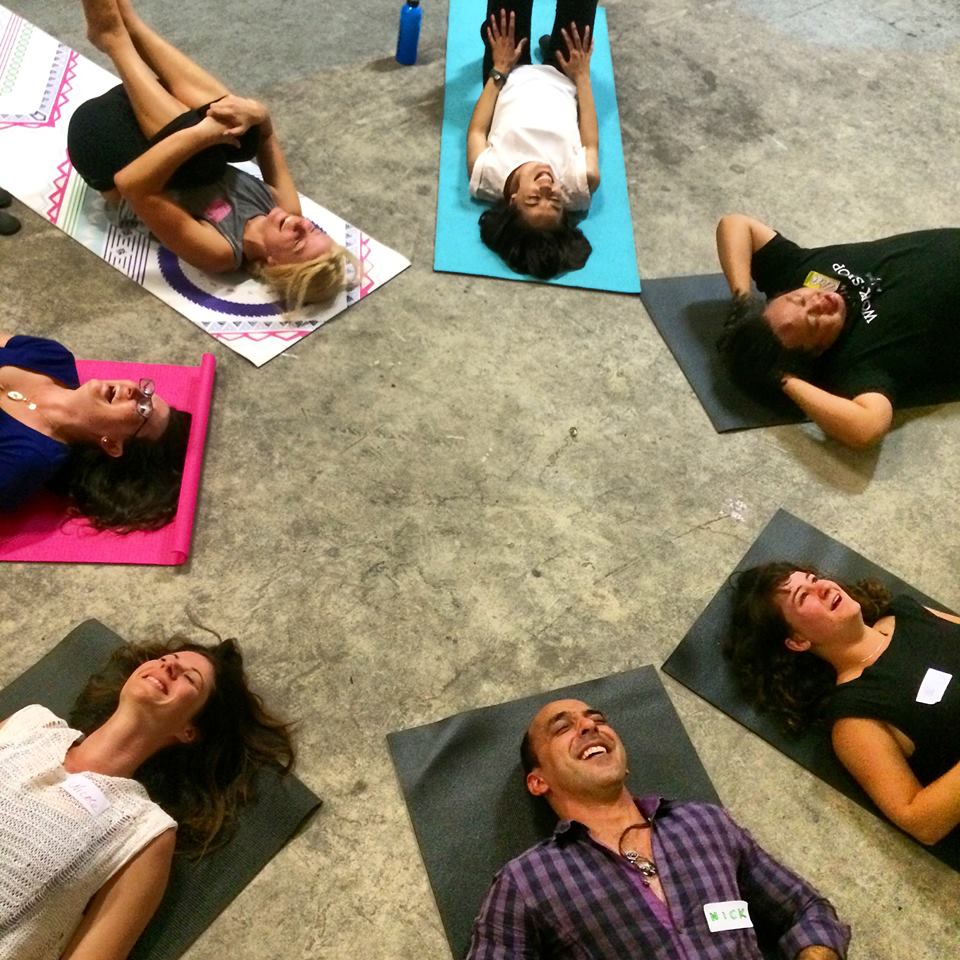
Key Differences between Laughter Yoga and Laughter Wellness
1. The Laughter Workout
In Laughter Yoga, the laughter workout alternates between clapping exercises, yogic breathing and laughter exercises.
In Laughter Wellness, the laughter workout alternates between rhythmic exercises, breathing exercises, positive reinforcements and laughter exercises. The additional category of positive reinforcements incorporates exercises designed to create positive energy, a positive mindset and positive self-expression. Examples of exercises in this Laughter Wellness category are: positive affirmations, sharing happy news, celebrating what went well, heartfelt descriptive praise, gratitude exercises and saying Yes.
2. Energy and Intention
Laughter Yoga has a greater focus on the energy of laughter. As the session alternates between three categories of exercises, there tends to be more laughter exercises within a session of the same duration, for example a 60 minute session.
Laughter Wellness is a process designed to create and sustain positive energy. In addition to the tool of laughter, positive energy may be created through a range of exercises, for example through affirmations, the energy of appreciation, celebration, etc.
Laughter Yoga traditionally used terms such as ‘fake it til you make it’. Laughter Wellness emphasises choosing and allowing laughter, rather than faking or forcing. Changing the intention really changes the experience. Many Laughter Yoga facilitators have moved towards this approach.
3. Laughter Wellness includes a greater diversity of exercises, especially within the rhythmic and breathing categories
Laughter Yoga typically involves two main clapping exercises – the basic Ho Ho Ha Ha Ha clapping exercise and the Very Good, Very Good, Yay! Chant.
Laughter Wellness involves rhythmic exercises that may include interactive partner clapping exercises, interactive group exercises, rhythmic exercises that stimulate the thymus gland, body tapping, rhythmic exercises that cross the midline and give the brain a workout, rhythms that involve hands and feet and various other types of body percussion. These are often performed to the rhythm of the ho ho ha ha ha chant. The diversity of exercises, available within Laughter Wellness, enables a facilitator to tailor exercises to greatly meet the needs of a group. For example, in a team building session, there may be more partner and group exercises. For an energiser at the start of a corporate training session, there may be more cross body exercises, to get both sides of the brain connected, leading to a greater ability to focus.
In addition to hundreds of documented exercises, Laughter Wellness Facilitators are encouraged to create their own exercises, for each category, within a set criteria. Inspiration may come from anywhere, at any time!
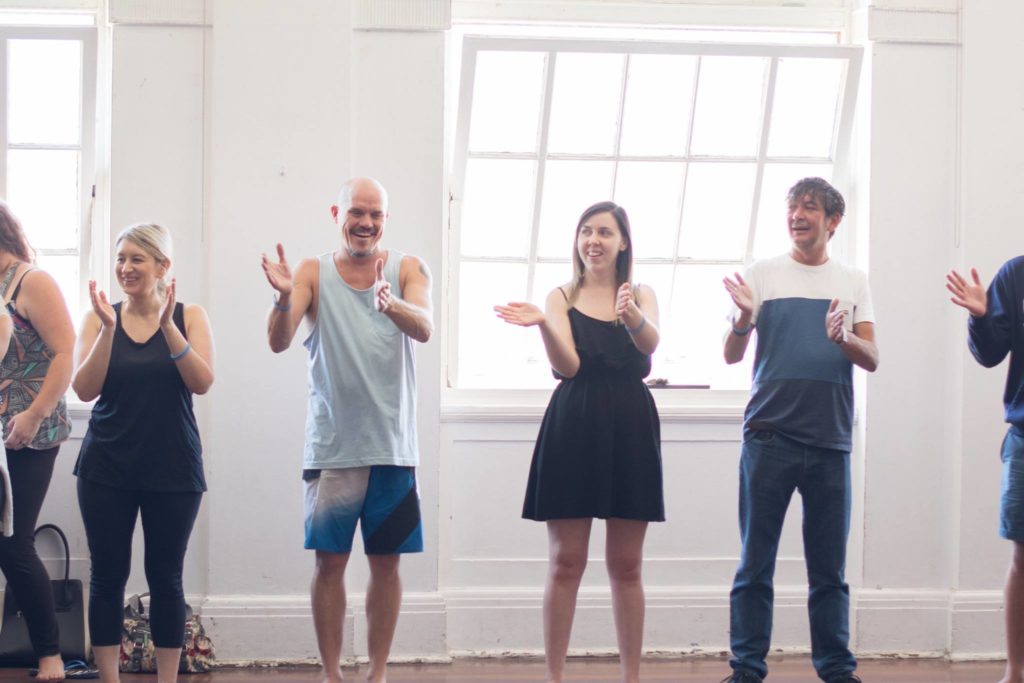
4. Laughter Yoga typically involves a greater level of playfulness
In Laughter Yoga, there is often a greater focus on playful laughter exercises that may involve role playing a situation, for example, motorbike laughter exercise, where you imagine travelling around the space on a motorbike, as you laugh. Playful laughter exercises may be incorporated into Laughter Wellness sessions too. In the Laughter Wellness training, there is an emphasis on the fine art of sequencing a session, so that the session starts off safe, whilst people are still in thinking mode, before facilitating a shift in playfulness levels, as people warm up to the process and expand their comfort zone. In this way, people are more likely to experience, rather than judge an exercise and more people may be receptive to the process.
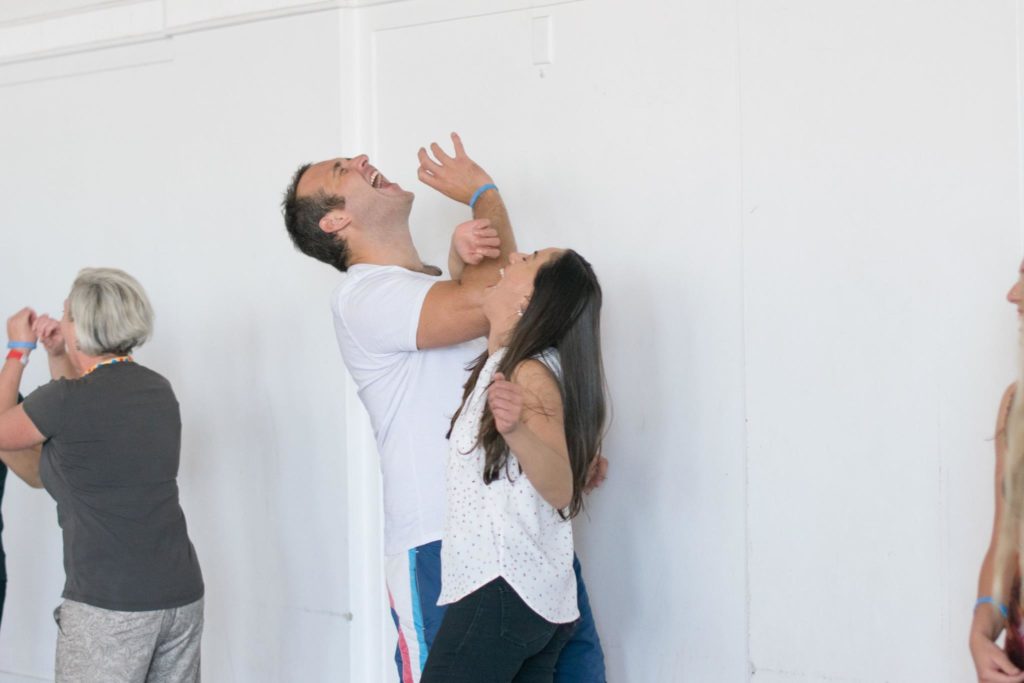
5. Different Levels of Physical Activity and Pace
All exercises in Laughter Yoga are physical, for example clapping, breathing and laughing. Laughter Yoga can feel more like a physical workout. A laughter yoga session often feels like it has a faster pace.
A Laughter Wellness session may feel more grounded overall and tends to have a slower pace, due to the additional category of the positive reinforcements. These exercises generally aren’t as high energy as laughter exercises.
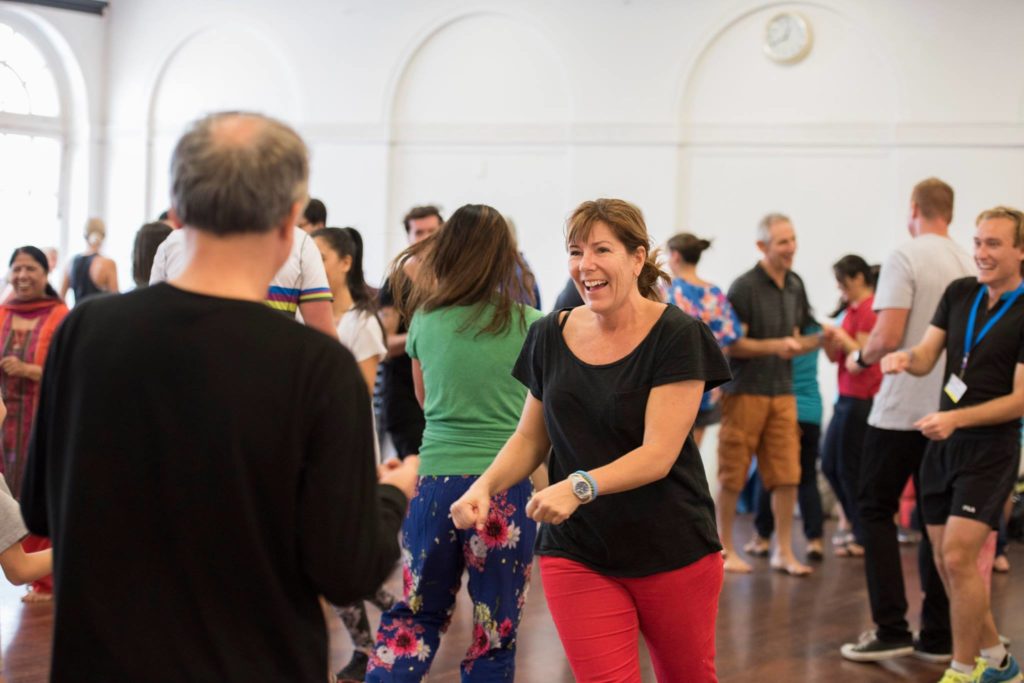
6. Opportunities for Connection
Both Laughter Yoga and Laughter Wellness sessions are highly interactive and allow a great level of connection.
In Laughter Yoga, people connect through interactive physical exercises, such as laughing together, which is a great way of connecting and bonding.
The Laughter Wellness method includes more tools that may facilitate deeper levels of conscious connection and empathy amongst participants. In Laughter Wellness, I have witnessed many wonderful moments of connection. For example, team members basking in the opportunity to give each other descriptive praise, or to share their happy news or what they are grateful for. Team members may often experience other sides of one another, for example, the proud parent.
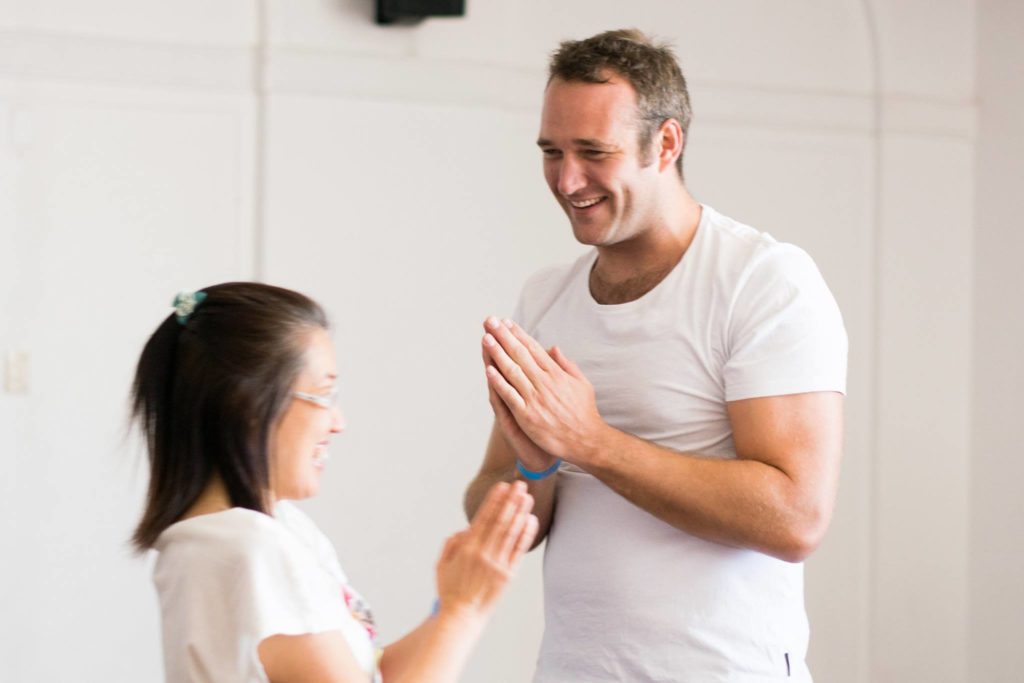
7. A Body – Mind Practice
Both modalities are considered a body – mind practice, although Laughter Yoga really is a process where you laugh and you don’t talk. By the time you reach the laughter meditation, you may find that you have really shifted into a meditative state.
As Laughter Wellness involves conscious connection exercises, including opportunities for sharing, participants may be engaged in some level of cognitive thought, although they are also experiencing mindfulness in the moment.
8. Beyond Laughter Exercises
According to Dr Madan Kataria, the four elements of joy include laughing, playing, singing and dancing. In Laughter Wellness, there is a framework that clearly shows facilitators how to effectively incorporate singing, dancing and /or playing within the context of a Laughter Wellness session, if they choose to do so.
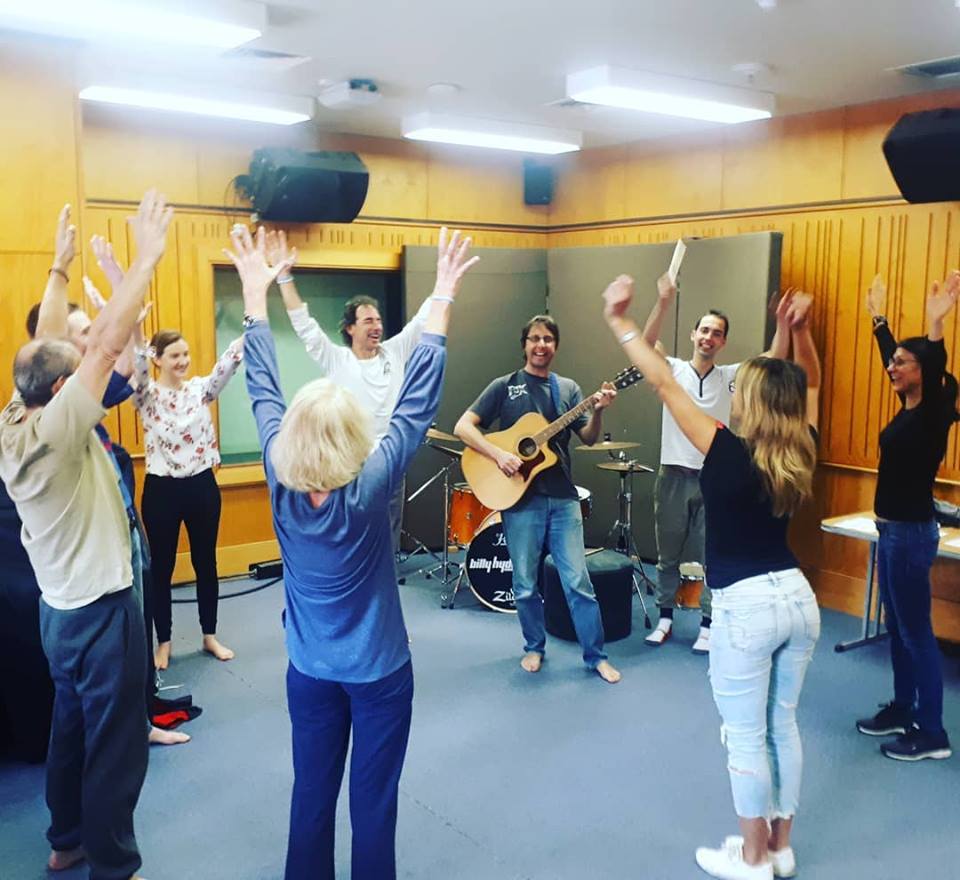
9. Laughter Wellness is a more comprehensive method
Laughter Wellness provides facilitators with more tools in their tool box, that they can use to facilitate a valuable session. The training is much more comprehensive and facilitators have been trained at a higher level. For example, in Australia, a Laughter Yoga Leader Training is a 12 hour training, over two days. A Laughter Wellness Training, through Laugh and Live Well, is a 60 hour training, over three months and includes a 10 hour supervised practicum. All facilitators complete the training feeling confident in their ability to share valuable Laughter Wellness experiences with groups.
10. Laughter Wellness provides greater opportunities to align thoughts and feelings and combine intention with elevated emotion
In Laughter Wellness, breathing exercises are followed by positive reinforcements. For years, I have intuitively directed people to draw their attention to the space around their heart, before affirming exercises such as gratitude exercises, to create alignment between thoughts and feelings. (At the time of writing this article, I have started the process of training as an Add Heart Facilitator, with the Heart Math Institute, so that I can understand more about heart coherence and include more opportunities for heart coherence in my sessions.) According to Heart Math, a technique for creating heart coherence is to draw the attention to the space in your heart, slow the breath and bring up an elevated emotion. The sequence of the Laughter Wellness workout lends itself really well to incorporating opportunities for people to direct their attention to their heart, focus on their breath and bring up elevated emotion, during the breathing and positive reinforcement exercises. Following this with a laughter exercise creates even more positive energy in the body and feels wonderful!
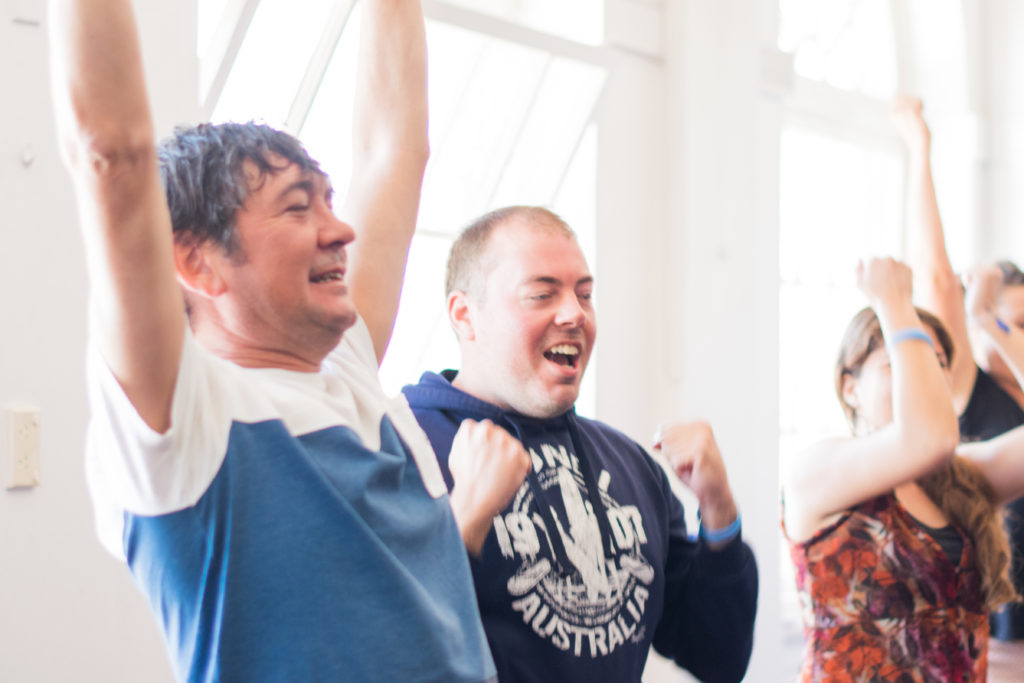
Sometimes, clients are very clear about which method they would like. Sometimes, we have a pre-planning chat and it feels that one method would be more appropriate than another. For example, Laughter Yoga may be more appropriate for:
– a client who requests a shorter session, as an energiser to prepare a group for a team building adventure.
– groups that wish to focus on a physical experience. Perhaps they are not too keen on sharing exercises, which may involve a greater level of openness and vulnerability.
Laughter Yoga may allow the session to really focus on LAUGHTER, if that is what is desired.
I find that Laughter Wellness offers me a wider range of tools that I can use to really prepare and facilitate a valuable experience for my clients. It can allow a deeper level of connection. It allows me to tailor my sessions to meet the needs and objectives of a group, to a greater level. It also provides more opportunities to teach a wider range of tools that participants may be put into practice, to create positive energy and a positive mindset, beyond the session. I personally started my laughter journey though Laughter Yoga and explored Laughter Wellness as a form of continued laughter education. It really allowed me to deepen my laughter practice on a personal and professional level.
Sometimes, a client may say, ‘We’d like to go with Laughter Yoga, but can you add some of the Laughter Wellness stuff?’’ I often chuckle and say ‘Yes, of course’. For once a Laughter Yoga Facilitator is trained in Laughter Wellness, their sessions will forever have a different flavour. You can’t unknow what you now know or resist what you know works!
Contact us, to discuss a Laughter Yoga or Laughter Wellness workshop for your organisation, or to discuss how our Laughter Wellness Facilitator Training may suit you. Our next Laughter Wellness Facilitator Training, in Sydney Australia, begins in January 2020.
Laugh and Live Well,
Connie
Note – Laughter Wellness Facilitator Trainings require at least 60 % consistency, amongst trainers. Whilst some aspects of the modality must remain consistent, this flexibility allows trainers to develop their own style and honour their strengths and areas of passion within the modality. It is a good idea to explore the style of the trainer you may like to train with, through attending an event or by checking out their content, to feel whether their style resonates with you.
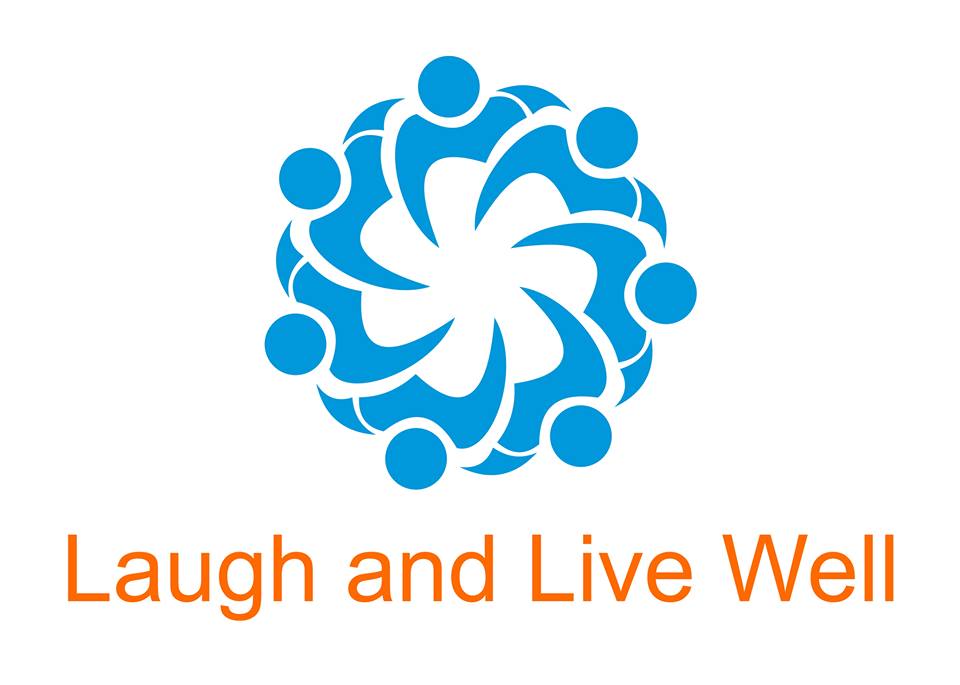


No Comments